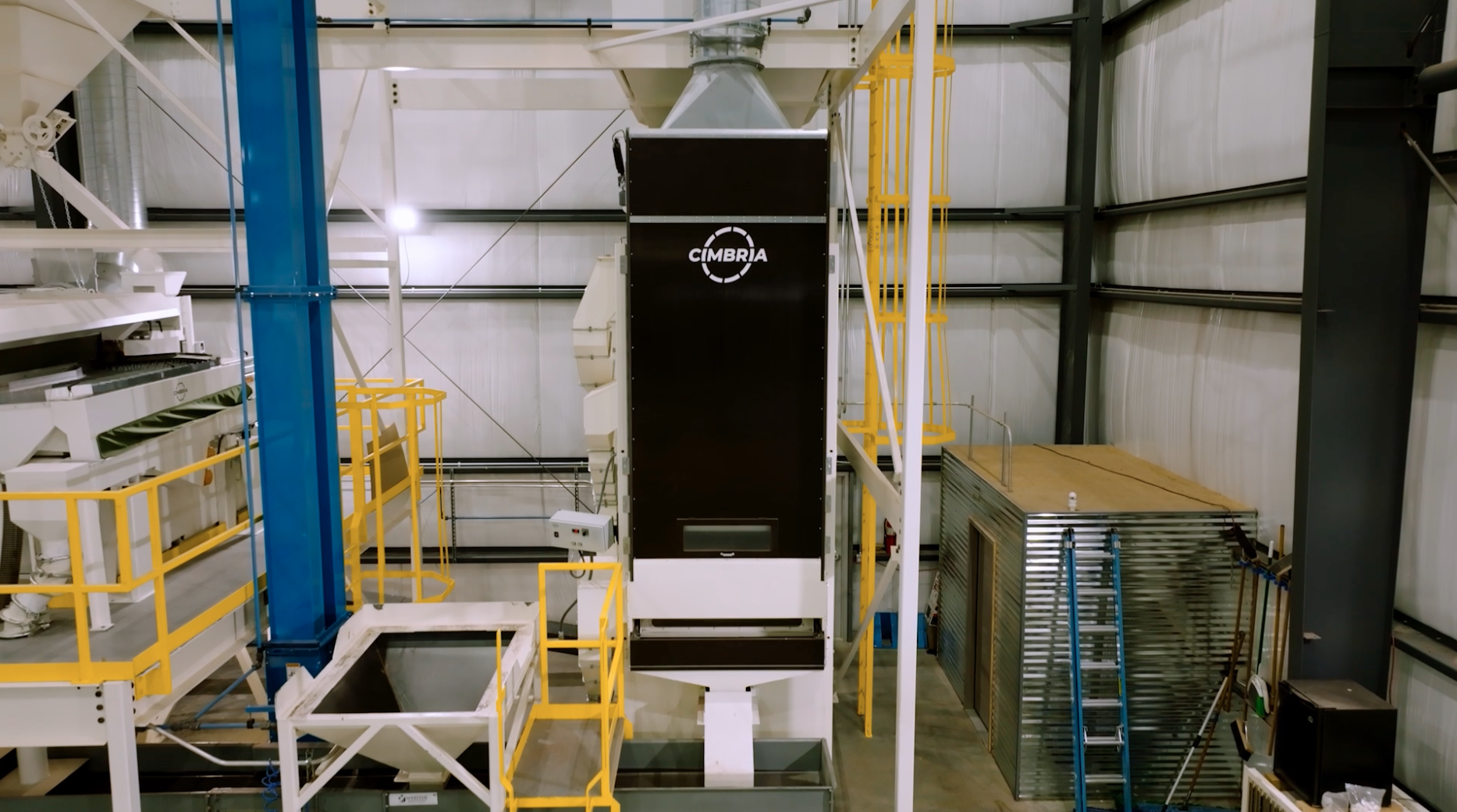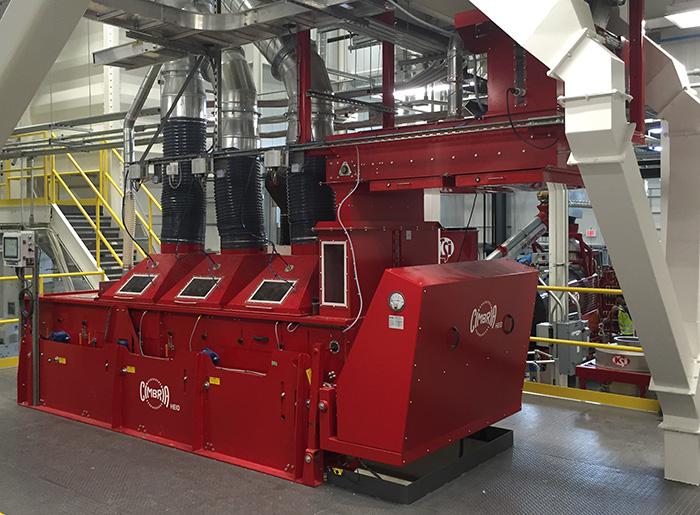Achieving Consistent Seed Coatings: A Guide to Coating Machines and Processes

Agricultural plants begin life as fragile seeds that must be handled with meticulous care. Each step of the seed conditioning process is critical to preserving the ability to germinate. Building on the foundation set in our previous article, “Exploring Seed Treating Equipment and Processes,” this guide dives deeper into the specialized world of seed coatings. Seed coatings take initial treatment to the next level by enhancing performance, protecting investments, and maximizing yield potential. This article highlights the equipment, techniques, and best practices required for consistent, high quality seed coatings.
The Unique Role of Seed Coatings in Agriculture
Seed coatings serve a distinct purpose in agriculture, elevating basic seed treatment into a strategic advantage. While treatment provides protection through fungicides and insecticides, seed coating processes apply more sophisticated layers of materials to create a controlled microenvironment around each seed. This specialized approach makes it possible to precisely deliver nutrients and other protectants that complement those initial seed treatments.
Coatings create uniform seed size and weight to ensure consistent planting depth and spacing. These are crucial factors for achieving improved germination rates and stronger early-stage growth. This protective barrier also offers an additional defense against soil-borne pests and diseases.
Maybe most importantly, modern coating technology allows precise nutrient delivery exactly when and where young plants need it most. By assisting root system growth, seedlings direct energy toward sprouting instead of finding nutrients themselves, which leads to quick maturity and even germination. This targeted nutrition creates the perfect conditions for maximizing each seed’s genetic potential.
Inconsistent seed coatings can result in uneven germination, poor nutrient delivery, and reduced yields. Not only do these inconsistencies undermine the very benefits that coating technology should provide, but it underscores the necessity of precise equipment and processes to protect your seed investment.
The Seed Coating Process
Achieving consistent, high quality seed coatings requires careful attention to each step of the process.
Seed Preparation
Before any coating can be applied, seeds must undergo thorough cleaning and other preparation to ensure the coating adheres effectively. Cleaners remove debris or dust from the seeds to ensure a smooth surface, and they also help prevent contamination. Equipment like air screen cleaners and gravity separators are perfect for the job, separating seeds from unwanted materials and ensuring only viable, healthy seeds proceed to the coating stage.
Coating Application Methods
Modern coating technology, including film coating, encrusting, and pelleting, offers tailored methods designed for specific needs and outcomes:
- Film coating, sometimes called seed dressing, is a thin, uniform layer that is applied without altering the seed’s original shape while adding those crucial protective elements. This coating often uses a polymer to bind active compounds like fungicides, insecticides, or biologicals to the seed. You can add a color to the coating to help differentiate seeds, but otherwise, film coating does not change the seed’s natural characteristics.
- Pelleting increases the seed’s size and weight by surrounding it with a shell, which is particularly valuable for small seeds like lettuce. This specialized process transforms the seed’s shape and size while maintaining vital seed health, significantly improving handling and planting precision.
- Encrusting is similar to pelleting but retains more of the seed’s original shape. This method adds weight and improves seed handling without altering the size in a significant way.
Drying and Quality Verification
After the coating is applied, seeds are dried to preserve the coating’s integrity. This final stage of the process is crucial to long-term effectiveness and success. The dried seeds are then inspected for uniformity through advanced imaging and measurement techniques and tested to confirm they meet stringent quality standards before being packaged and distributed.
Essential Coating Machines
The quality of the equipment directly influences the effectiveness of the seed coating. Key machines include the following:
- Seed treaters & coaters—Designed for precise application, these machines handle a variety of coating techniques and materials. They can be used for a variety of seeds, including fragile ones like seed corn or pulses. Examples of this kind of equipment include Cimbria’s Continuous Coater or Centricoaters for batch coating.
- Drying systems—Innovations in drying technology ensure coatings remain intact and effective. Machines like jog conveyors prevent wet kernels from clumping together to avoid improper bagging. The gentle handling removes any risk of abrasion or disruption to the coating layer.
- Automation tools—Advanced systems monitor coating application in real time, reducing waste and ensuring consistency.
Technological Innovations in Seed Coating
Advancements in technology have significantly improved the precision and efficiency of seed coating processes, providing better opportunities for optimizing performance and managing equipment.
Real-Time Monitoring Systems
Integrating real-time monitoring technologies like optical scanners or laser imaging allows you to track coating thickness, uniformity, and coverage more precisely. These systems make sure that the coating layer stays consistent across the entire batch, giving you the ability to make adjustments in real time.
Automation and Data Analytics
Automation plays a big role in increasing the precision and efficiency of the seed coating process. From coating application to drying and quality verification, implementing automation helps streamline operations while reducing labor costs and improving consistency. Data analytics help identify trends over time to help you optimize performance and predict equipment maintenance needs before a breakdown occurs.
Innovation in Coating Materials
Modern seed coatings now offer more than just protection—they enhance total seed performance. For example, coatings made from biodegradable polymers adapt to environmental conditions where the seeds are being planted. This offers moisture retention capabilities and a controlled nutrient release. Advanced adhesion technologies also ensure coatings stay intact during planting and germination, with custom formulas available for different seed types.
Crop-Specific Coating Strategies
Different crops require different coating strategies to address their unique needs. Larger seeds like corn or soybeans need precise coatings to balance durability with nutrient delivery. Consistency in seed size and performance is absolutely essential for germination and growth. Small seeds, like lettuce, require pelleting to increase their size and improve handling. This reduces the risk of uneven planting and facilitates processing. Customized coatings are designed for specific environmental challenges like drought resistance or pest protection. Tailoring coatings to meet these needs helps improve overall crop resilience and yields.
Best Practices for Achieving Coating Consistency
Achieving uniform seed coatings is essential for maximizing the benefits of your investment. Following these best practices will help you maintain the highest level of precision and quality.
Select the right materials.
The foundation of successful seed coating begins with the right materials. Consider the environmental conditions where the seeds will be planted, crop-specific needs or requirements, and any other seasonal variables like temperature and humidity. Then, choose a formula that balances the need for durability, nutrient delivery, and pest control.
Calibrate your equipment.
Proper equipment calibration ensures a consistent application of coatings every time. This directly affects the uniformity and quality of the seed coating, so it’s important not to skip this step. Calibration should be conducted before each run and whenever there is a noticeable shift in seed or coating material type. For example, adjust the speed of the coater and flow rates to match the type of seed and the desired thickness. Consider integrating automated systems that help identify inconsistencies during the process.
Perform preventive maintenance.
Preventive maintenance programs work in tandem with calibration to make sure your equipment stays effective for the long haul. Scheduled maintenance should include regularly cleaning all machinery, ensuring mechanical parts are lubricated and any worn out components are replaced quickly. You should also regularly inspect and clean dryer fans, ducts, and belts to prevent dust buildup and ensure proper air circulation. This helps avoid uneven drying that could impact the final stage of seed coating.
Conduct quality control inspections.
Frequent quality checks help you verify uniformity and quality of coated seeds. Vision systems or near-infrared sensors can automatically flag issues to ensure every batch is consistent. Performing random sampling of coated seeds can help identify any potential problems before the seeds are packaged and distributed.
Provide comprehensive training.
Your team needs to be thoroughly and regularly trained to enhance operational efficiency and minimize human error. Make sure staff know how to operate and adjust all equipment–especially when switching between different seed types or coating materials. Equip your team with the knowledge needed to identify and solve common issues like uneven coating or clumping so you can minimize downtime and maintain production flow. Finally, and perhaps most importantly, emphasize the importance of safety when handling chemicals and equipment and during maintenance operations.
Success through Precision Coating
Consistent seed coatings are integral to agricultural success by improving germination, protecting crops from pests and disease, and optimizing overall yields. Advances in technology and equipment make achieving uniform coatings more accessible than ever. By adopting cutting-edge solutions, integrating innovative tools, and tailoring approaches to your specific needs, you can secure long-term operational success.
Here at Bratney, we can design, build, and equip seed facilities like yours with next-level technology so you can achieve consistent seed coating every time. Subscribe to our blog today to access more expert insights and practical solutions for optimizing your agricultural operations.


